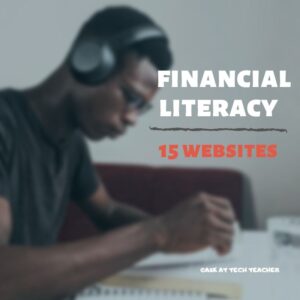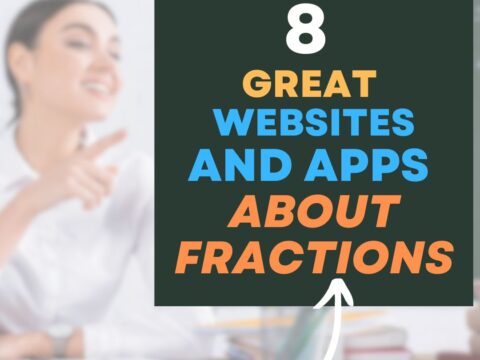 When kids read that America’s $23 trillion+ debt is accepted by many experts as ‘business as usual’, I wonder how that news will affect their future personal finance decisions. Do they understand the consequences of unbalanced budgets? The quandary of infinite wants vs. finite dollars? Or do they think money grows on some fiscal tree that always blooms? The good news is: Half of the nation’s schools require a financial literacy course. The bad new is: Only half require a financial literacy course.
When kids read that America’s $23 trillion+ debt is accepted by many experts as ‘business as usual’, I wonder how that news will affect their future personal finance decisions. Do they understand the consequences of unbalanced budgets? The quandary of infinite wants vs. finite dollars? Or do they think money grows on some fiscal tree that always blooms? The good news is: Half of the nation’s schools require a financial literacy course. The bad new is: Only half require a financial literacy course.
If your school doesn’t teach a course about personal economics, there are many online sites that address the topic as mini-lessons. Some are narrative; others games. Here are fifteen I like. See if one suits you:
Admongo
Age group: Middle school
Through this interactive video game, students learn to identify advertising and understand its messages with the goal of becoming informed, discerning consumers. To win the game, they will have to answer questions like, “Who is responsible for the ad?”, “What is the ad actually saying?”, and “What does the ad want me to do?” For educators and parents, Admongo includes tools like videos, lesson plans, printed materials, downloads, and alignment with state standards.
Admongo is put out by the Federal Trade Commission who also offers another well-received game, “Spam Scam Slam” about spam.
Banzai
Age group: middle and high school
Banzai is a personal finance curriculum that teaches high school and middle school students how to prioritize spending decisions through real-life scenarios and choose-
your-own adventure (kind of) role playing. Students start the course with a pre-test to determine a baseline for their financial literacy. They then engage in 32 life-based interactive scenarios covering everything from balancing a budget to adjusting for unexpected bills like car trouble or health problems. Once they’ve completed these exercises, they pretend that they have just graduated from high school, have a job, and must save $2,000 to start college. They are constantly tempted to mis-spend their limited income and then must face the consequences of those actions, basing decisions on what they learned in the 32 scenarios. Along the way, students juggle rent, gas, groceries, taxes, car payments, and life’s ever-present emergencies. At the end, they take a post-test to measure improvement in their financial literacy.
The program is free, takes about eight hours (depending upon the student), and can include printed materials as well as digital.
Financial Football
Age group: Upper elementary, middle and high school
Financial Football is a collaboration between the National Football League, the NFL Players Association, and Visa to use the sport of football to promote financial literacy among high school and middle school students. It is a fast-paced, interactive game that engages students in football strategy while teaching money management skills. Teams compete by answering financial questions to earn yardage and score touchdowns. Players pick their NFL team and the opponent, the level of difficulty, skill level, their age-group, and the length of play. Play takes gamers through all the steps of a football game–from the coin toss on–with progress defined by how students answer financial questions.
The program is free, online, with stunning graphics and authentic NFL music. If you’re a fantasy football fan, this is a winner.
Gen I Revolution

Age group: high school
Developed for middle school and high school students, this online game helps students learn important personal finance skills as they compete against classmates. The game includes sixteen Missions in which students attempt to help people in financial trouble. To get started, students join the Gen i Revolution, select their Operatives, and begin to earn points as they work to complete each Mission.
The games are free and can be played as part of a class (with a class code) or an individual. Each mission is about thirty minutes, which means all sixteen can be completed in about eight hours, or over a series of classes.
Hands-on Banking
Age group: Upper elementary
This game-based website covers budgeting, needs vs. wants, savings vs. checking, credit, banks, and where money comes from. Each lesson starts with an introduction, then an in-depth discussion on the topic. At the completion, students model the discussed activity. Instructions are both written and audio, making them accessible to lots of learners. Students finish the program with an assessment of knowledge and certificates. Despite the space-themed adventures and the friendly aliens with goofy voices, the vocabulary is sophisticated and a calculator may be required. This one is geared for 4th and 5th graders. Teens have a different version called Hands-on Banking: Teens and young adults play Hands-on Banking: Young Adults.
The program is free, online (it does have a non-flash version for iPads), and is best completed over a series of sessions.
How the Stock Market Works
Age group: High school
With this free real-time streaming stock market game, students set up accounts or join an existing group. They invest virtual cash, research their strategy with over a hundred videos and tutorials, and compete against classmates and the world to see how successful they would be if they were using their money.
There are lots of online stock market games (I included a different one last year). This one is used by 10,000 schools each year and 350,000 individuals. It also includes a teacher’s guide, a series of lesson plans, and the Common Core standards addressed.
Living Wage Calculator
Age group: Upper elementary, middle and high school
Put out by MIT, Living Wage Calculator estimates the cost of living in your community or region. The calculator lists typical expenses, cost of living, and typical wages. Students start by selecting their state, county, or metropolitan area, and then evaluate costs vs. expenses in that area. Older students can also read articles on living wages through the United States.
Rich Kid, Smart Kid
Age group: teens
Rich Kid Smart Kid is a collection of four games where three children–Ima, Jesse, and Reno–struggle with real-life scenarios such as running an ice cream stand, raising money for a personal goal, the importance of allocating earned money to varied needs, (such as charity, investments, and savings), and the difference between good debt and bad debt. Games are leveled for age groups from Kindergarten to high school. They include thorough lesson plans, learning objectives, classroom activities, and discussion questions, as well as companion websites with more resources.
The program is free, online, and can be completed in four sessions–one for each game. There are also add-on low-tech options like board games.
Stock Market Game

Age group: high school
The Stock Market Game (by SIFMA) is an online simulation of the global capital markets that engages students in the world of economics, investing and personal finance. Students set up market accounts and make decisions about buying and selling based on research and real-life events. It is played by over 600,000 students every year. In the 35 years it has been around, 15 million students in all fifty states have used it to promote their financial literacy. Once registered, teachers have access to lesson plans and other resources to help unpack the Stock Market Game experience for their students.
The Game is free, suggested for grades 4-12, and delivered via website or mobile app.
Spent
Age group: middle and high school
It’s just money, until you don’t have it. Spent postulates that you’ve lost your job, had your house foreclosed, and are down to your last $1,000. It asks, Can you make it through the month? You start by selecting one of several jobs and then evaluating net pay vs. ongoing expenses. It discusses the selection of health insurance, an apartment, travel expenses, the family pet’s sickness, and more. You make decisions and the program tells you the consequences of that choice. The game ends when you run out of money. The learning is as much about empathy and social awareness as it is about the proper spending of limited funds.
This program is web-based and geared for middle school and high school.
iOS Apps
Because more often than not, 18-24 year olds are on a mobile device rather than a computer, here are six apps that can be played from anywhere:
- Bankaroo – Using this free virtual bank for kids, students learn to manage their allowance while saving for goals. To track learning, they earn badges for their accomplishments. This app works on desktops as well as mobile devices.
- Motion Math – As students struggle to run their own pizzeria, they must balance budgets, think proportionally, buy ingredients, design the pizzas, and sell to customers. The app also includes which Common Core Math Standards are addressed by the gameplay.
- Savings Spree — Students learn how the choices they make each day can add up to big savings or expenses depending on their spending decisions. Kids see how they can save for short-term goals while investing for future needs.
- Time is Money – This free Chrome add-on converts prices on a webpage to hours worked.
***
The importance of financial literacy can’t be overstated. Rather than introduce one game from this collection during a class unit on personal economics, have students play throughout the school year, reinforcing prior learning, scaffolding knowledge, and self-reporting their progress. Set one game aside to play at the end of the year as a summative assessment. Not only will students appreciate their financial literacy, so will their parents.
More on economics:
Economics and Finance websites
Engineers Week — A Must for High School
@SIFMAFoundation
@teachBanzai
@PracticalMoney
@FTC
@genIRevolution
Jacqui Murray has been teaching K-18 technology for 30 years. She is the editor/author of over a hundred tech ed resources including a K-12 technology curriculum, K-8 keyboard curriculum, K-8 Digital Citizenship curriculum. She is an adjunct professor in tech ed, Master Teacher, webmaster for four blogs, an Amazon Vine Voice, CSTA presentation reviewer, freelance journalist on tech ed topics, contributor to NEA Today, and author of the tech thrillers, To Hunt a Sub and Twenty-four Days. You can find her resources at Structured Learning.




































